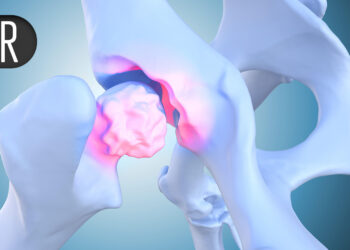The coronary sinus reducer (CSR), an hourglass-shaped stent that narrows the coronary sinus to increase coronary sinus pressure, has shown some promise in treating patients with refractory angina. But a meta-analysis published today in JACC: Cardiovascular Interventions found the benefits of the intervention are likely smaller than those early studies predicted.
“There have been lots of unblinded single-arm studies [of CSR], but only three randomized controlled trials. We wanted to look at the different effect sizes between the unblinded and blinded studies to better understand the overall potential efficacy of the device,” said Rasha Al-Lamee, MD, a cardiologist at the National Heart and Lung Institute in London, UK, who led the meta-analysis.
Al-Lamee and her colleagues looked at data from a combined total of 180 patients in the three trials, as well as 13 single-arm studies with 668 total patients. They found the coronary sinus procedure to be safe, with a success rate of 98.3%.
But while both the single-arm and the controlled trials demonstrated improvements in symptoms of angina, the effect size was much smaller in the controlled trials.
In the more rigorous trials, 26% of patients experienced at least a one-class improvement and 17% had at least a two-class improvement on the Canadian Cardiovascular Society classification of angina. Those figures were about one third of the gains reported in the single-arm trials. What’s more, the randomized controlled trials found no evidence of benefit based on continuous measurements such as the Seattle Angina Questionnaire. Nor did they find improvements in objective measures such as myocardial perfusion associated with the intervention.
Deepak Bhatt, MD, a cardiologist at the Icahn School of Medicine at Mount Sinai in New York City, who co-wrote an editorial accompanying the journal article, said more treatment options are needed for patients with refractory angina, who have often exhausted all other medical therapies and surgical procedures. But while coronary sinus reduction shows promise, the meta-analysis demonstrates why more, and larger, trials will be needed before clinicians can use it more broadly.
“It’s not an inexpensive procedure, so we want substantial, objectively quantified evidence that it helps patients,” he told Medscape Medical News. “History is littered with examples of things we were convinced worked but really didn’t.”
Percutaneous laser therapy, for example, seemed to show benefits for refractory angina at first, but more rigorous randomized trials found no benefit from the procedure, he said.
The CSR device is already approved in the UK and Europe and its use is on the rise there, said Al-Lamee, but it has not yet been approved in the US. The ongoing COSIRA-II trial, with an estimated enrollment of 380 patients, will ideally be adequately powered to provide definitive results and support US approval, she said.
Al-Lamee said that, should COSIRA-II show definitive benefit, it may be possible in the future to consider widening the application. Perhaps it could be considered before more high-risk revascularization options. “For example, why offer re-do coronary artery bypass surgery if you can use a device that is effective and much lower risk instead?” she said.
Al-Lamee had received consulting and speaker fees from Shockwave Medical, which makes the CSR device. Bhatt reported no relevant financial conflicts.
Brian Owens is a freelance journalist in New Brunswick, Canada.
Source link : https://www.medscape.com/viewarticle/coronary-sinus-reducer-shows-promise-caveats-2025a1000l76?src=rss
Author :
Publish date : 2025-08-11 18:05:00
Copyright for syndicated content belongs to the linked Source.













